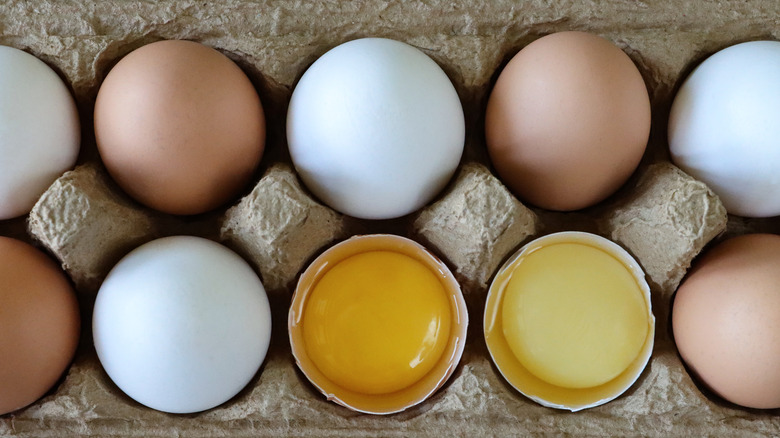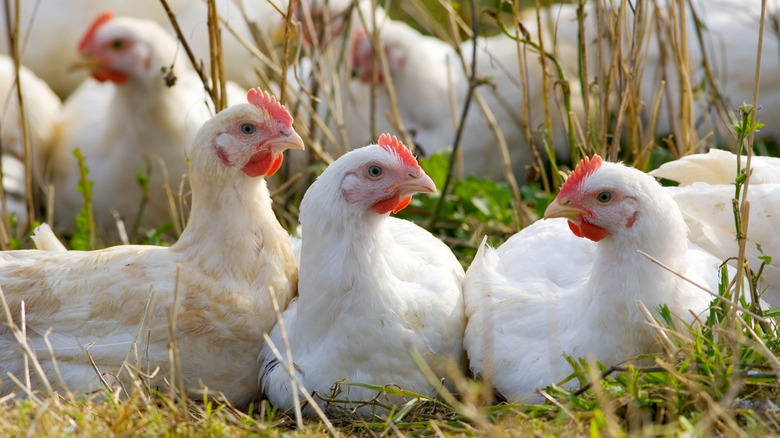Is There A Nutritional Difference Between White And Brown Eggs?
If you've spent time on a farm, you know that uniformity is seldom a reality. Animals, like humans, carry unique traits, and that includes chickens. Mother Nature has deemed them highly proficient at laying eggs, to the delight of humans in the United States, who consumed them at an estimated 277.5 eggs per person in 2022. But that doesn't mean all eggs are the same.
Those fragile, oval-shaped stalwarts of breakfast and brunch come in various color shades, ranging from pink to blue, cream, green, and speckled — but mostly white and brown. Many people believe that brown eggs carry better nutritional benefits than their white counterparts, but that's almost entirely a myth. The color of an egg is not what determines its levels of protein, vitamins, iron, fats, and minerals. The only slight difference comes in the size of the egg, with an extra-large one harboring slightly more nutrients simply because it's bigger — and brown eggs tend to be larger than white ones.
Some outside factors do contribute to nutrition, such as what chickens eat and whether they can freely roam. The extra sunlight for free-range and cage-free chickens can result in higher vitamin D in the eggs, and some poultry farmers add things such as fish oil and flaxseed to their feed to increase beneficial omega-3 fatty acids in the eggs. So, what actually makes one egg remain white and another turn a golden or pale brown hue? It all comes down to genetics and the proclivities of pigmentation.
Breeding and pigmentation
All eggs start out white, gaining pigmentation as they develop over roughly 24 hours, particularly in the fourth of five stages of formation. That's when colors emerge, transforming the outer shell, even though the inner portion of the shell remains white. The defining factor in which egg gets a coat of color is the mama and papa, and which breed of chicken they belong to.
White Leghorns, by far the most prolific egg producers on earth, are white chickens that lay white eggs, while other white-eggers, including the Ancona, Andalusian, Polish, Cornish, White Rock, and many others can sport various colors. You may recognize the Leghorns from bits of history and entertainment. The Single-Comb White Leghorn is said to have arrived in America with intrepid explorer Christopher Columbus in 1493, and rooster Foghorn Leghorn strode across television screens for almost 20 years as a beloved "Looney Tunes" and "Merry Melodies" character.
Brown eggs similarly come from specific chicken clans, such as Rhode Island Reds, Plymouth Rock, New Hampshire, and Black Australorps. Though green eggs are a rarity (despite the infamy of Dr. Seuss' "Green Eggs and Ham" tale), they do exist. They come from a breed called the Olive Egger, a cross between chickens that lay dark brown and blue eggs. A group known as the Easter Egger can lay any number of pastel-hued eggs, including pink, green, blue, and mixtures within the range.


